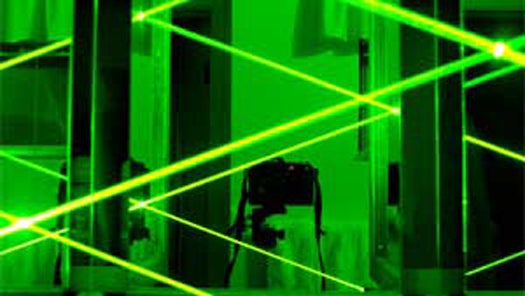Laser Light Could Make Flu Vaccine 7 Times More Effective
Lasers to the rescue, again


Syringe
When you get a vaccine, it’s typically injected into the muscle below the skin with a needle. But vaccines administered through the skin can use smaller pin-prick methods that could be useful for those afraid of needles, such as children. These cutaneous vaccines have the potential to be relatively painless, and could also possibly require less vaccine material. Unfortunately, the chemical adjuvants used in intramuscular vaccines can cause scarring and ulceration, and therefore new adjuvants for cutaneous (skin-administered) vaccines are “urgently needed,” as various researchers have written. Adjuvants are chemicals like aluminum salts and oils which work by mimicking components of pathogens (like bacterial cell walls) that the immune system has evolved to recognized and react to.
A new study on various animals suggests that briefly illuminating the area where the vaccine will be injected with laser light could increase the effectiveness of the flu vaccine, by four to seven times, as measured by the number of antibodies produced by the body, compared to using no laser light. This method also has the advantage of not needing the usual chemical adjuvants. Exactly how it compares to a typical human intramuscular flu vaccine is unclear, since this study was done on mice and pigs, although the researchers suggest the technique could translate to humans (since, among other things, pig’s skin and immune systems are similar to ours).
The lasers create small rifts within the skin called “microthermal zones,” which heal by themselves within a few days, the authors write in a study describing the technique, published in Nature Communications. Before croaking, the dying cells send out “danger” signals telling the body to respond to viruses and other invaders, which summons a type of immune scout called plasmacytoid dendritic cells. These cells help the body recognize and react to the influenza virus, the authors wrote. The technique also has fewer side effects compared to conventional chemical adjuvants and makes it possible to avoid certain adjuvants, like aluminum, which can be harmful at high concentrations and which is a favorite target (besides mercury) among those opposed to vaccines.
The type of lasers used in this study were originally developed for cosmetic purposes, to make skin appear more youthful, reported the website Neomatica. The small microthermal zones give rise to new growth of epithelial cells, which can give skin a more youthful appearance.